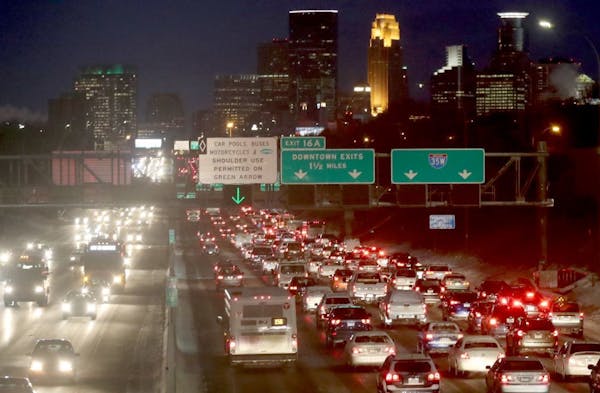Metro Transit will face its biggest test ever Sunday when the agency has the job of whisking 20,000 Super Bowl fans to and from U.S. Bank Stadium.
That's 7,000 more fans than the agency has ever moved for a single event, a task so big that Metro Transit recently held a dress rehearsal for its Super Bowl express by running trains in and out of the stadium station in the middle of the night.
More than 20 trains — a few so new you can still smell the fresh paint — will be used exclusively to get ticket holders to and from boarding points at Stadium Village at the University of Minnesota and the Mall of America in Bloomington and the stadium. After the game, in a highly unusual move, both tracks will be used only for departing Green and Blue line trains, with 1,200 fans leaving every four minutes.
"This will be different from what everybody is used to," said Michael Guse, manager of light rail operations.
That's true for regular rail riders, too. On Sunday, they will be put on replacement buses that will run all day while most of the Blue Line and a portion of the Green Line are reserved for Super Bowl fans. As consolation, rides on the replacement buses will be free.
Metro Transit spent more than a year crafting its Super Bowl plans, which call for fans getting on trains at Stadium Village and the Mall of America to go through a four-step security check similar to those who board flights at the airport. Trains will take fans nonstop from there to the stadium.
Departures will be more tricky. Metro Transit will have trains parked all along 5th Street inside the tightly secured perimeter, ready to roll when the game is over. Each train will carry about 600 people. When one train leaves, another will immediately pull into the station, load and depart. The goal is to clear the crowd within 90 minutes after the final gun, Guse said.
Buses will be at the ready for fans who choose to leave early. "We won't make 100 people wait two hours for another 500 to join them," Guse added.
The job of keeping the trains moving smoothly and efficiently falls to the staff at the agency's Rail Control Center, the pulse of the agency's rail operations. Rail Control is a room filled with state-of-the art technology complete with cameras and monitors so big they put even the largest big-screen TV to shame. From there, staffers can keep tabs on every train's movement and respond to breakdowns or other issues, such as last Wednesday's gas leak in downtown Minneapolis that brought train service to a halt.
The agency also will have an army of police and ambassadors stationed along both rail lines to provide security and direct regular passengers to replacement buses.
Metro Transit received loads of criticism in 2016 when crowds swarmed the platform after the first two events at the new U.S. Bank Stadium. Riders were met with long lines, slow trains and jammed cars. Since then, Metro Transit said it has learned many lessons to speed up crowd dispersal.
On Sunday, that includes having buses on standby that can be pressed into service. Should an unforeseen event happen, "we will have an unforeseen answer," Guse said.
Improvements made during a summer of construction, including a new switch at 5th Street and Park Avenue, will also facilitate train movement, Guse said.
"Every day has become an event day because almost every day there is an event," Guse said. "We have become efficient. We move trains. People get on them and they get to where they are going."
Tim Harlow • 612-673-7768

Vikings look good at linebacker, but there's one issue to solve

Towns finds joy trying to stop 'best of the best' in Durant
AP Sports Week in Pictures: Pitcher Randy Vazquez, Olympic flame lit and Nelly Korda's pond splash
Police clear out a migrant camp in central Paris. Activists say it's a pre-Olympics sweep

